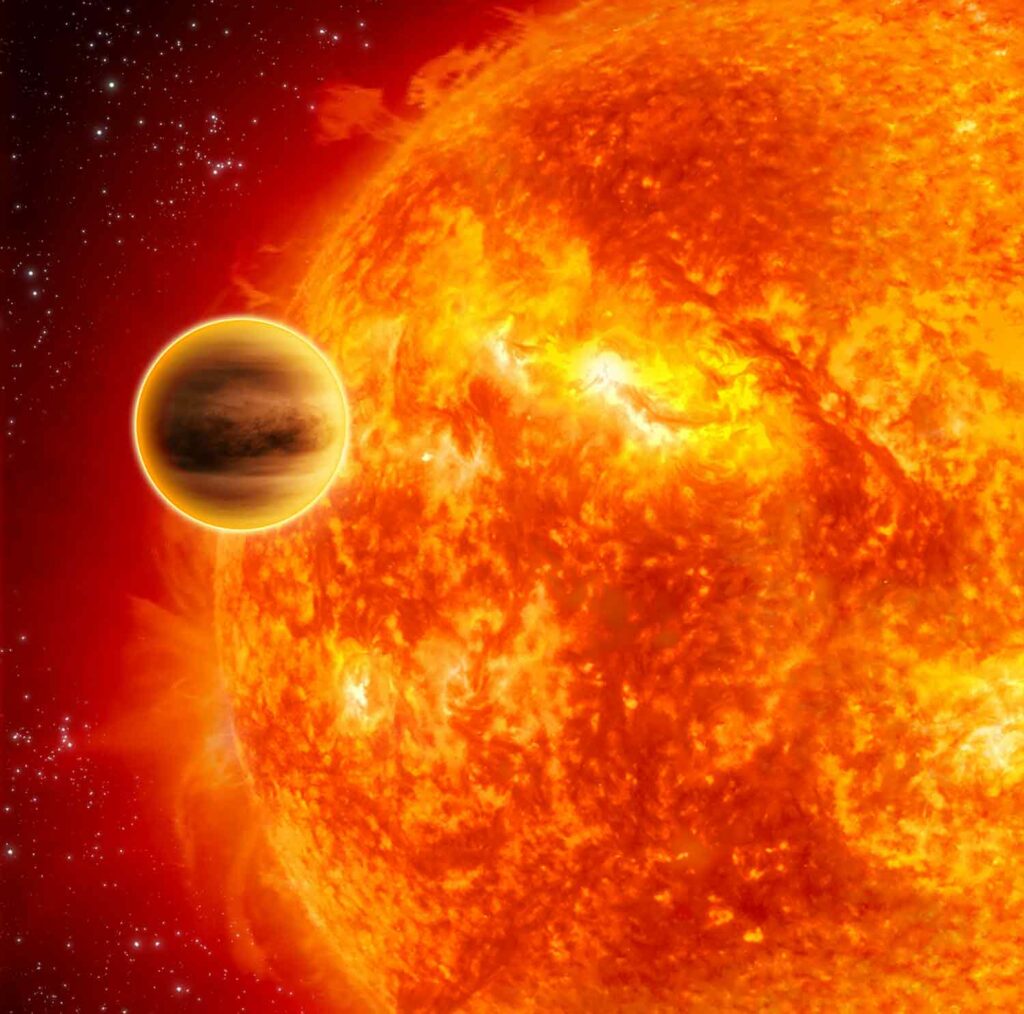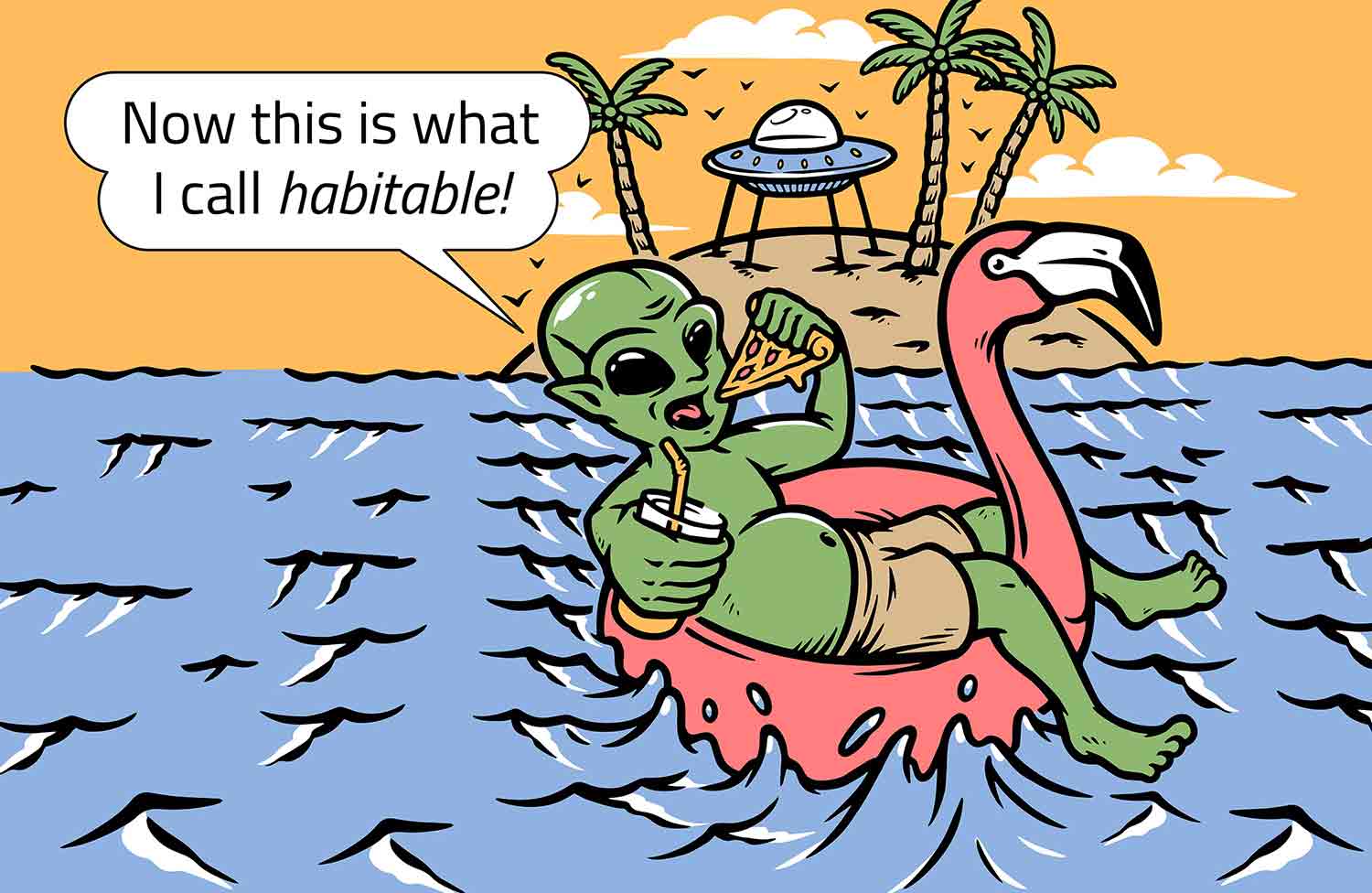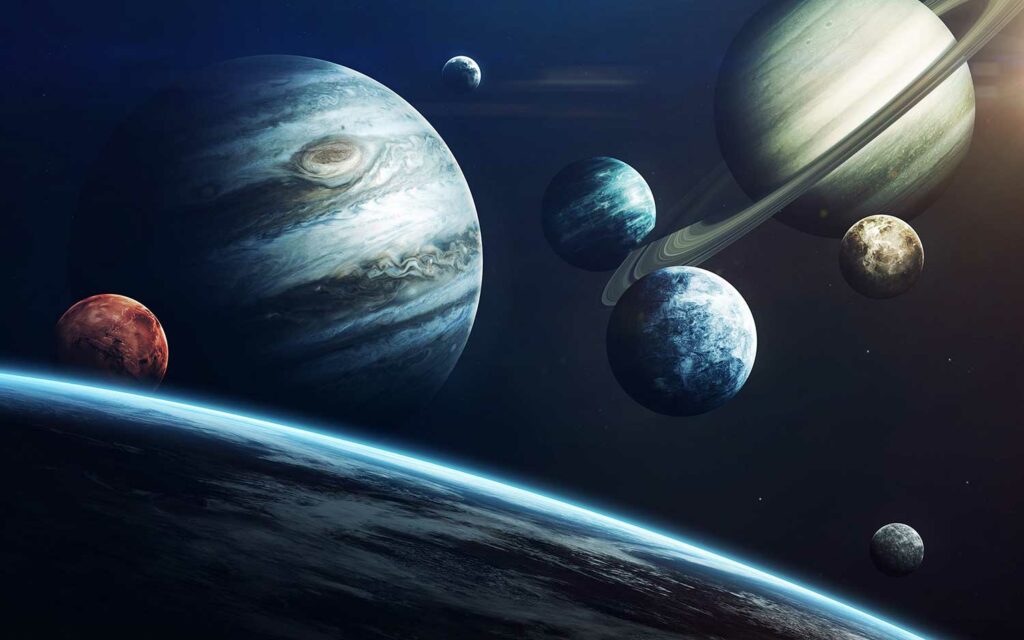An Earth-Like Planet
Scientists have identified a planet that has many of the characteristics needed to support life. What do they know so far?
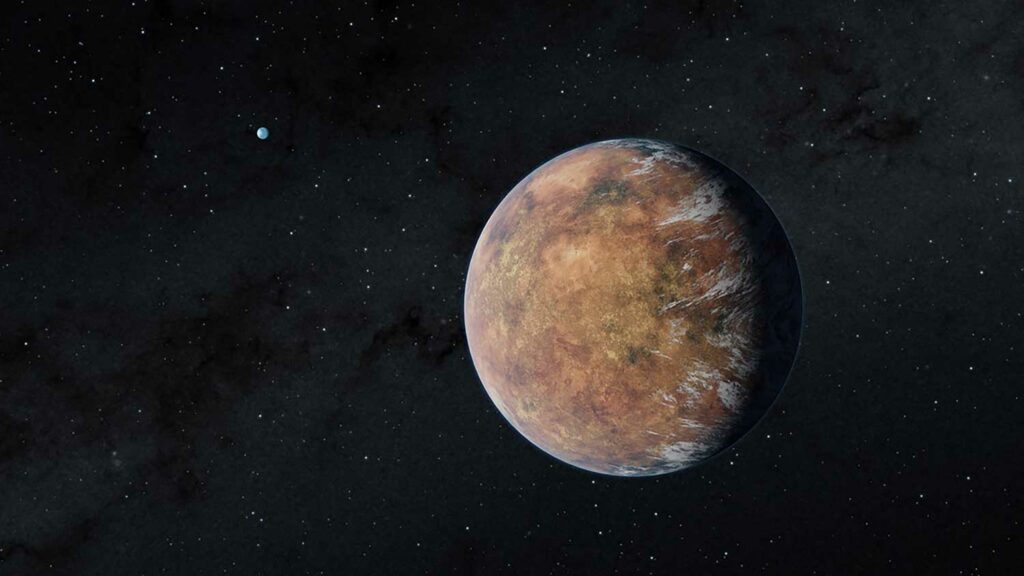
NASA/JPL-Caltech/Robert Hurt
This illustration shows the exoplanet called TOI 700 e, which is nearly the same size as Earth. The exoplanet TOI 700 d is in the background.
Scientists have come closer than ever to identifying another Earth. In January 2023, scientists announced the discovery of an exoplanet, or planet that orbits another star, which seems to be a lot like Earth. The planet, which has been named TOI 700 e, has many of the characteristics that are necessary to support life.
The planet was found in the TOI 700 solar system, which is 100 light years away from Earth. (One light-year is 5.88 trillion miles, or 9.46 trillion kilometers.) The system also includes previously discovered planets TOI 700 b, c, and d. All these planets orbit around a star called TOI 700, but only d and e are in the “habitable zone.” Planets within habitable zones are at the right distance from their star to have a livable temperature and, possibly, liquid water.
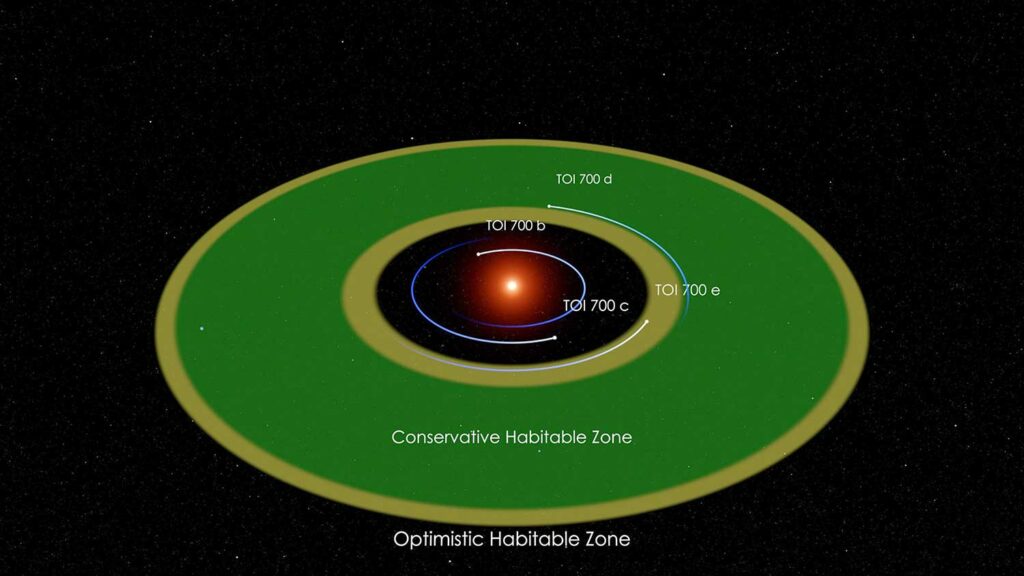
NASA Goddard
TOI 700 e is about 95 percent of Earth’s diameter. In other words, it’s nearly the same size as our planet. It probably has a rocky surface, another requirement for life. Years are short on TOI 700 e. The planet takes only 28 days to orbit its star. Scientists believe it is tidally locked, which means one side of the planet always faces its star, much like one side of our Moon always faces Earth.
TOI 700 e was detected by NASA’s Transiting Exoplanet Survey Satellite (TESS), a space telescope that surveys the sky in search of exoplanets. TESS monitors huge portions of the sky for 27 days at a time. This allows it to detect changes in the light of stars, which indicate that orbiting planets are crossing in front of them.
It’s not likely that TESS will be able to show scientists evidence of life on TOI 700 e. Scientists will probably need to spend years—maybe decades—trying to detect biological signatures. Biological signatures are molecules and elements that suggest the existence of life. It’s extremely difficult to detect such things on an object that’s so far away, scientists say.
The TOI 700 solar system is still somewhat mysterious. We know a lot more about our own solar system, of course. Check out the interactive below to learn more about Earth and its neighbors!
The TOI 700 solar system is still somewhat mysterious. We know a lot more about our own solar system, of course. Check out the interactive below to learn more about Earth and its neighbors!
